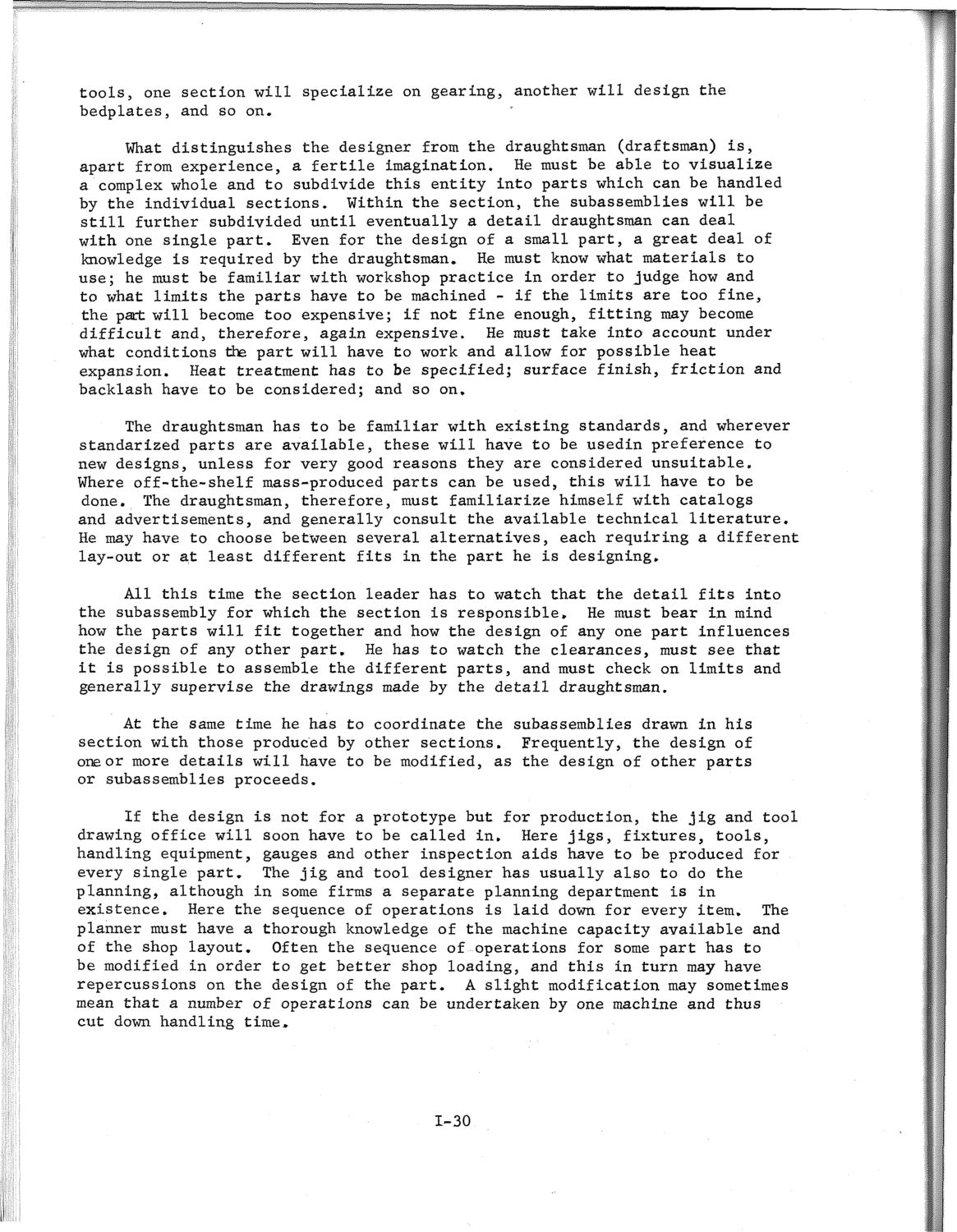| |
| |
Caption: SWE - Proceedings of the First International Conference of Women Engineers and Scientists
This is a reduced-resolution page image for fast online browsing.

EXTRACTED TEXT FROM PAGE:
tools, one section will specialize on gearing, another will design the bedplates, and so on. What distinguishes the designer from the draughtsman (draftsman) is, apart from experience, a fertile imagination. He must be able to visualize a complex whole and to subdivide this entity into parts which can be handled by the individual sections. Within the section, the subassemblies will be still further subdivided until eventually a detail draughtsman can deal with one single part. Even for the design of a small part, a great deal of knowledge is required by the draughtsman. He must know what materials to use; he must be familiar with workshop practice in order to judge how and to what limits the parts have to be machined - if the limits are too fine, the part will become too expensive; if not fine enough, fitting may become difficult and, therefore, again expensive. He must take into account under what conditions the part will have to work and allow for possible heat expansion. Heat treatment has to be specified; surface finish, friction and backlash have to be considered; and so on. The draughtsman has to be familiar with existing standards, and wherever standarized parts are available, these will have to be usedin preference to new designs, unless for very good reasons they are considered unsuitable. Where off-the-shelf mass-produced parts can be used, this will have to be done. The draughtsman, therefore, must familiarize himself with catalogs and advertisements, and generally consult the available technical literature. He may have to choose between several alternatives, each requiring a different lay-out or at least different fits in the part he is designing. All this time the section leader has to watch that the detail fits into the subassembly for which the section is responsible. He must bear in mind how the parts will fit together and how the design of any one part influences the design of any other part. He has to watch the clearances, must see that it is possible to assemble the different parts, and must check on limits and generally supervise the drawings made by the detail draughtsman. At the same time he has to coordinate the subassemblies drawn in his section with those produced by other sections. Frequently, the design of one or more details will have to be modified, as the design of other parts or subassemblies proceeds. If the design is not for a prototype but for production, the jig and tool drawing office will soon have to be called in. Here jigs, fixtures, tools, handling equipment, gauges and other inspection aids have to be produced for every single part. The jig and tool designer has usually also to do the planning, although in some firms a separate planning department is in existence. Here the sequence of operations is laid down for every item. The planner must have a thorough knowledge of the machine capacity available and of the shop layout. Often the sequence of operations for some part has to be modified in order to get better shop loading, and this in turn may have repercussions on the design of the part. A slight modification may sometimes mean that a number of operations can be undertaken by one machine and thus cut down handling time. 1-30
| |